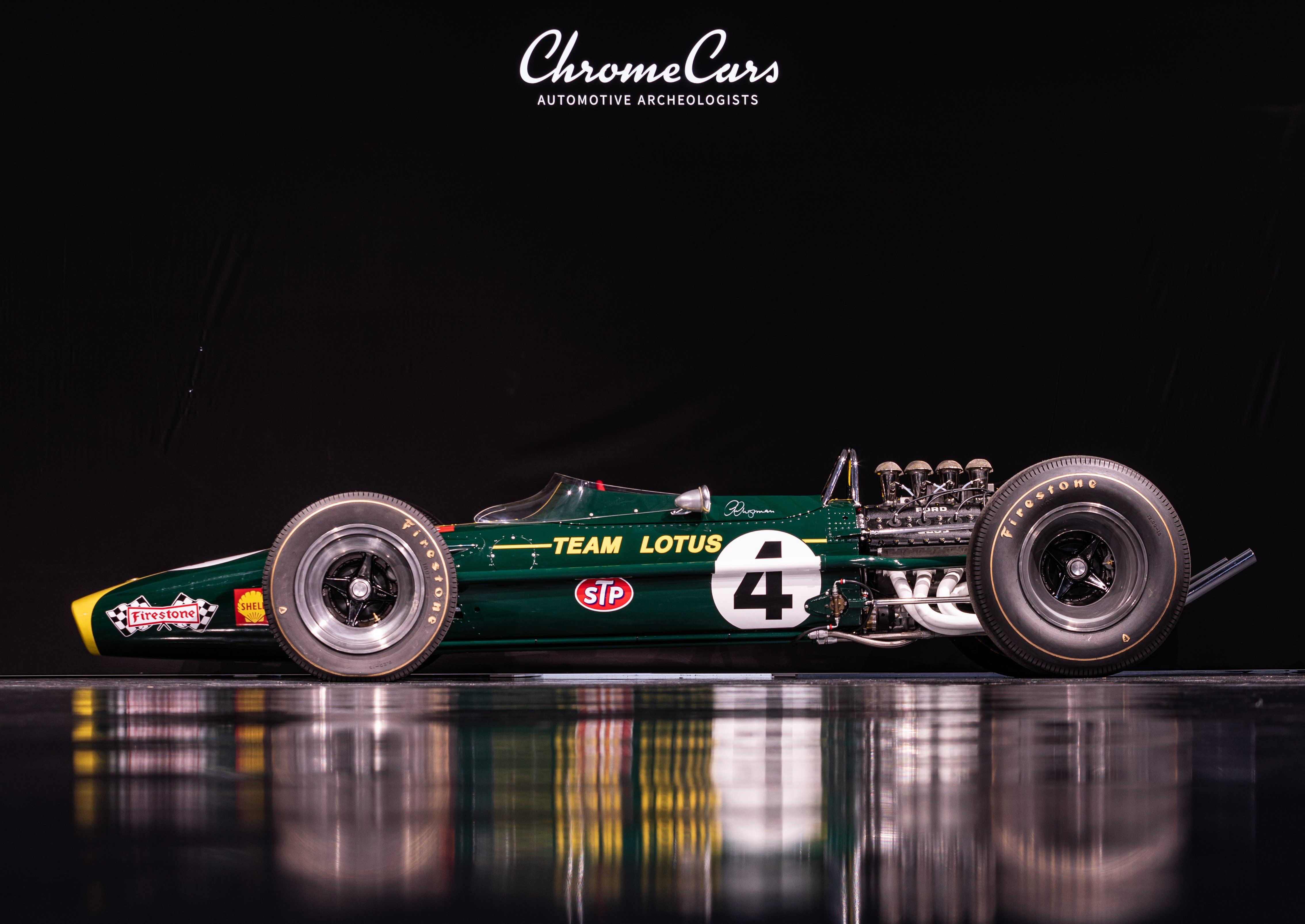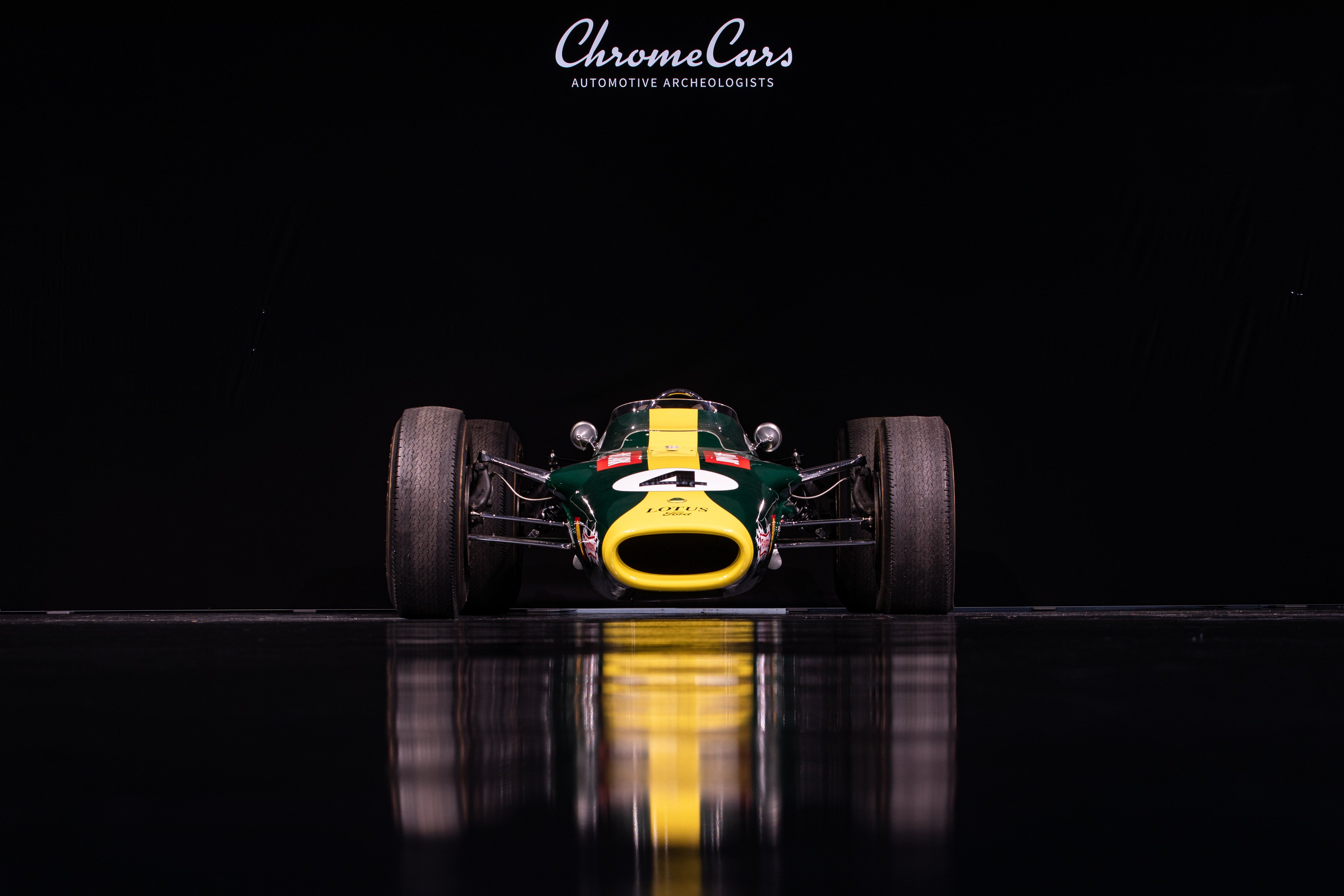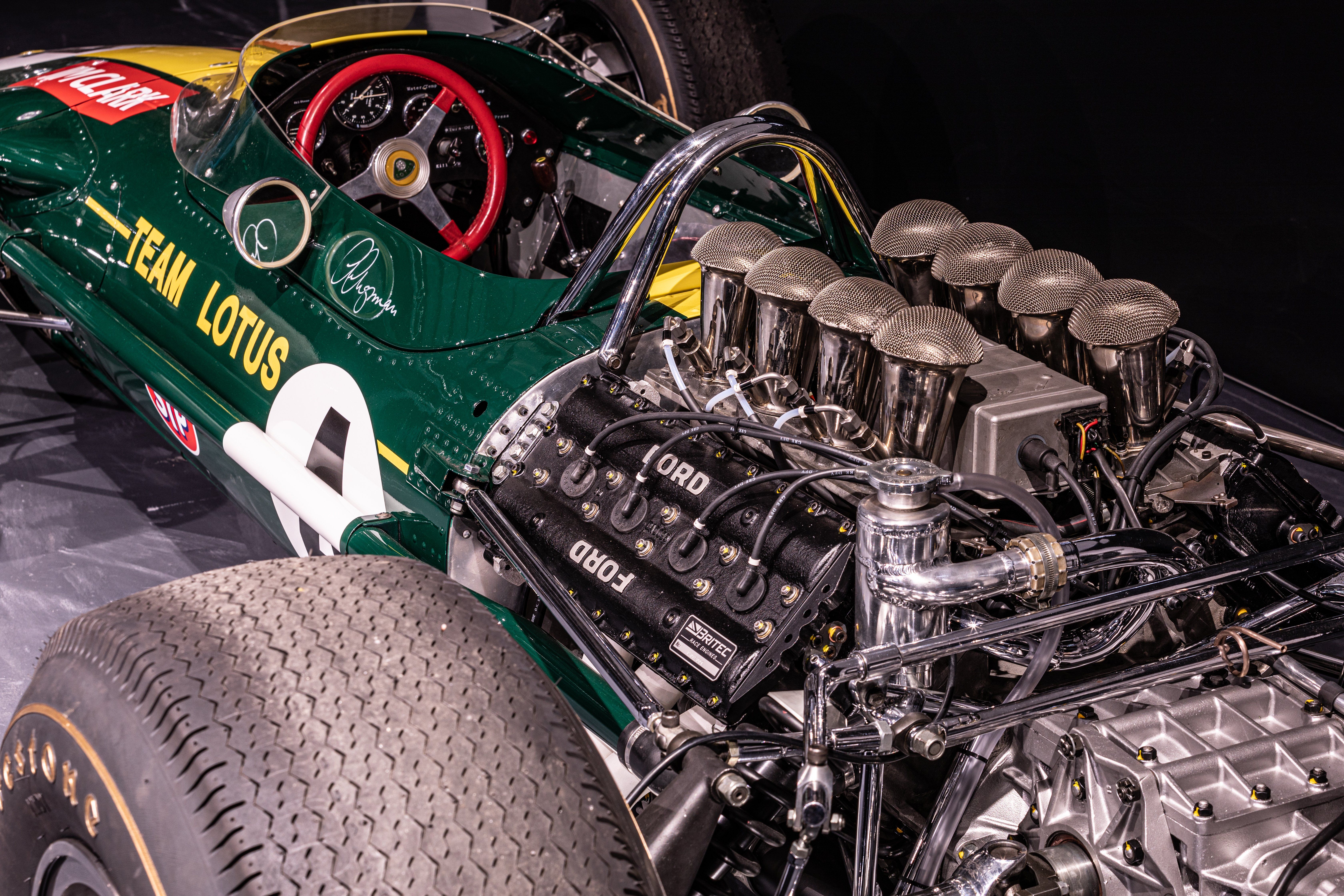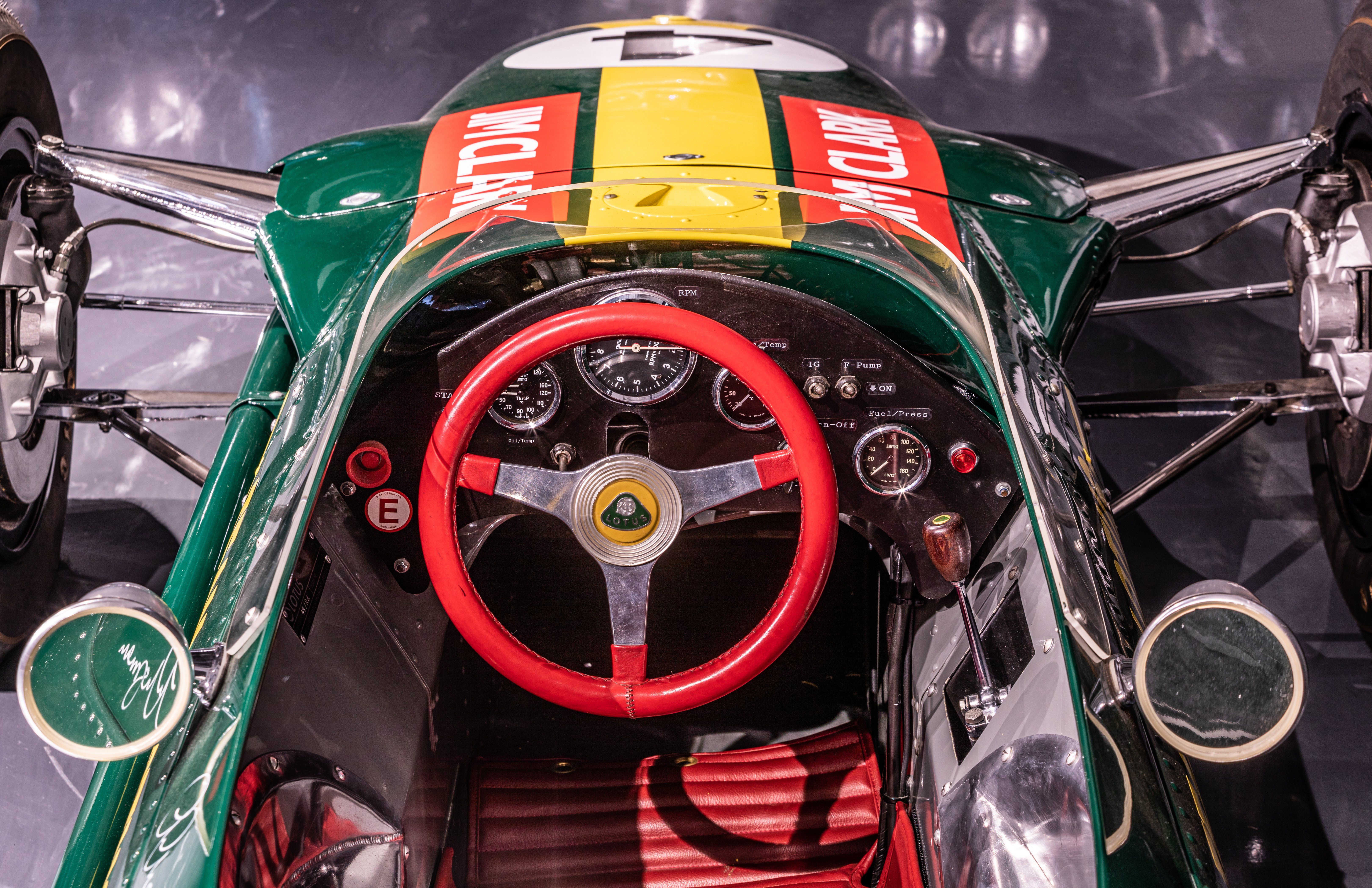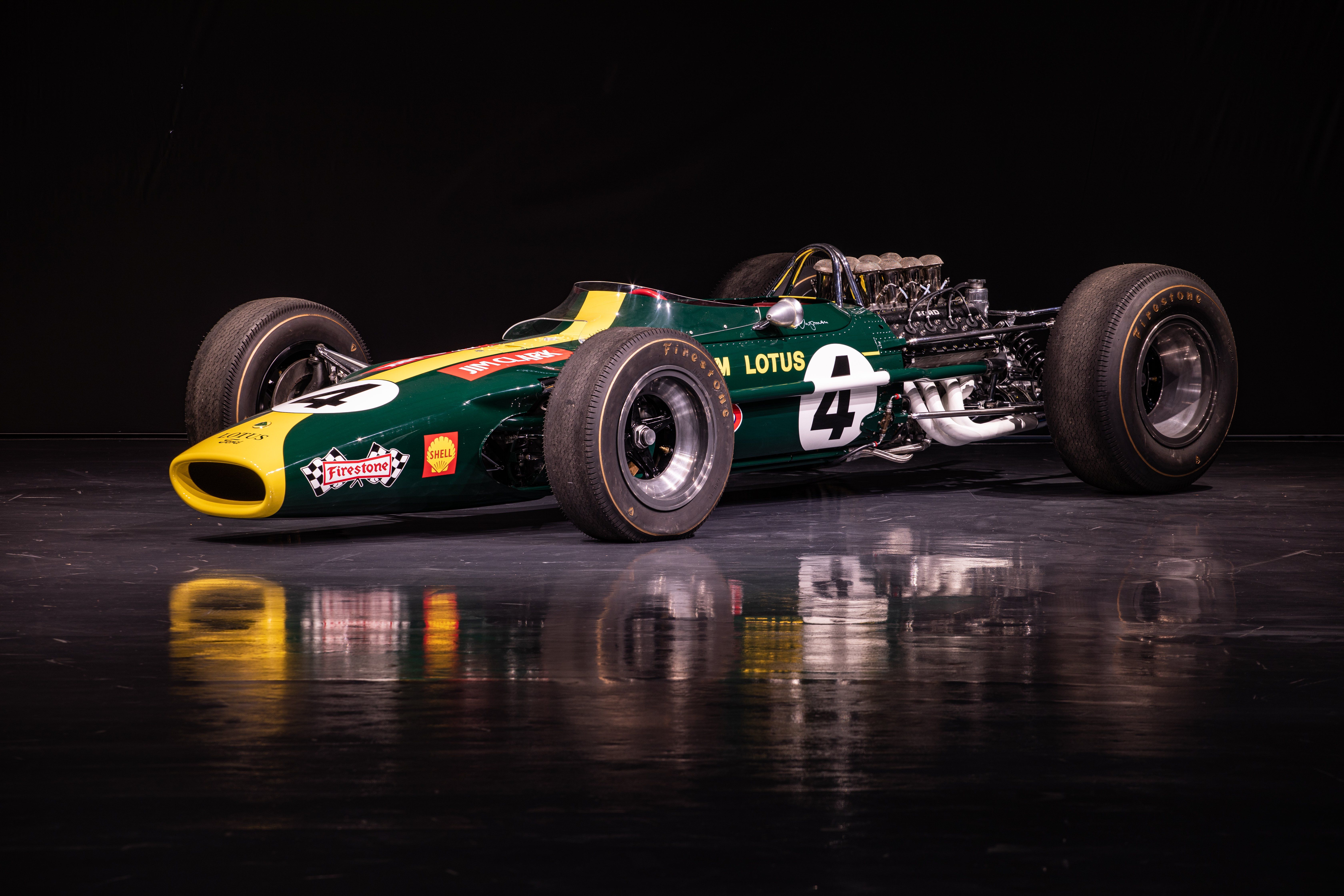In racing, there are great drivers and utterly astonishing ones and Jim Clark undoubtedly belongs to the latter category, the quiet farmer from Scotland scoring 25 Grand Prix victories and clinching two World Driver's Titles on top of an Indy 500 victory in just six years. This car, the fourth Lotus 49 ever built, was driven by Clark to his final F1 success and it's now for sale in Germany. Prepare to call your bank!
It's not often that we see cars driven by the world's finest drivers come up for sale. In November, a buzzing crowd gathered to see Michael Schumacher's Ferrari F2002 that the seven-time World Driver's Champion drove to victory in the 2002 French GP across the block in Abu Dhabi. At over $6.6 million, it became the second most expensive F1 car ever to be sold at a public auction. The first? Another one of Michael's unbeatable Ferraris. It is natural, then, to expect a car driven by the 'Schumacher of the '60s' to be really expensive, more so when the car in question is the brilliant 49.
The Lotus 49 is one of the most famous F1 cars ever created
It was in the midst of 'The Summer of Love' when Jim Clark rolled out of pit lane during the Dutch GP to put the first racing miles on the Lotus 49.
1967 Lotus 49 specifications
|
Engine |
V-8 |
|---|---|
|
Displacement |
3000 cc |
|
Power |
410 HP @ 9,200 RPM |
|
Bore |
85.7 mm/3.374 in. |
|
Stroke |
64.8 mm/2.551 in. |
|
Compression |
11.5:1 |
|
Valvetrain |
32 DOHC (4 valves per cylinder) |
|
Construction |
Aluminum block and head |
While Colin Chapman's long-standing driver missed out on the title in 1967, the 49 was at the foundation of both Graham Hill's and Jochen Rindt's successful title bids in the years that followed.
The story of the Lotus 49, or Type 49 as some refer to it, begins over five decades ago with a brief that was quintessentially Colin Chapman: "something simple". The car had to be simple because, when development work began under the watchful eyes of Chief Designer Maurice Philippe, the engine was not yet ready.
For the first time in over two decades, the engine would be, through and through, the heart of the vehicle as it was planned for it to be used as a stressed member of the monocoque, a concept also pioneered by Team Lotus with the 25 that debuted in 1962.
The delays were caused by Chapman's desire to get Ford on board to fund the whole thing which took some coaxing, despite the fact that Lotus and Ford had partnered before to do Indy and Clark won driving the Ford-powered 38 in 1965.
All of the behind-the-scenes happenings effectively cost Team Lotus the 1966 season, one that would see the introduction of 3.0-liter engines (double the maximum capacity of years past). Forced to wait for Ford to deploy the funds that allowed Mike Costin and Keith Duckworth of Cosworth Engineering to get to work, Lotus hurriedly put together the Lotus 43, a stop-gap F1 car powered by BRM's overly complicated and massively hefty H16 engine.
Arriving in time for round number 3 at Zandvoort in the Netherlands, the Lotus 49 was powered by what was, effectively, a pair of 1.5-liter straight-fours (known as 'Four Valves' or FVs) bonded together - thus the name 'Double Four Valves' or DFV.
Bolted to the chassis in four places, a design aspect that would remain constant through the DFV's (and its other DF-series siblings) life in F1, the engine gave the Lotus 49 vital rigidity while keeping it lighter than, say, a Brabham-Repco or a Ferrari.
Jim Clark won four times in '67 but five retirements saw him cap the year off with the bronze medal, 10 points shy off champion Denny Hulme's total. The first race of the 1968 season took place on New Year's Day in South Africa. Team Lotus arrived at Kyalami Circuit with one brand-spanking-new chassis in #49/R4 and a much-improved one in #49/R3. The former would be Clark's car while the latter would be driven by his arch-rival and team-mate, Graham Hill.
A Lotus started on pole for every race following the 49's debut at Zandvoort in '67 and, when the car didn't break down, either Hill or Clark earned the spoils of victory so everyone expected the 1968 South African GP to be a Team Lotus party and they were bang on the money. With a new specification DFV V-8 behind their heads, Clark and Hill were unstoppable, Jim taking pole by a second over Graham who, in turn, was a tenth quicker than Jackie Stewart.
The Matra driver was now also reaping the benefits of using a DFV engine after Ford and Lotus agreed to allow Cosworth to ramp up production and sell units to other teams with Ken Tyrrell's Matra outfit and McLaren being the first takers. Soon enough, though, 75% of the F1 field would be powered by Cosworth engines of some sort.
In the race itself, Clark had to dispose of fellow Scotsman Stewart in the opening sequence before opening up a gap in his unique unassailable manner and grab the victory. “No-one could keep up with Clark; he put Lotus and Cosworth right on top at the beginning of what should be an exciting season," wrote Motor Sport Magazine in its race report and it might well have been had it not been tainted by Clark's passing before the second race of the season.
With or without Clark, R4 soldiered on in Formula 1 as Team Lotus sold it to Rob Walker's team, one of the paddock's most respected privateers and a former Lotus customer. Walker put Swiss endurance racing ace Jo Siffert behind the wheel of the car but 'Seppi' crashed it in practice for the Race of Champions at Brands Hatch in March. Sent back to Walker's HQ in Pippbrook to be repaired, the 49 fell victim to a fire that almost reduced it to ashes along with a couple other valuable vehicles.
Two decades later, however, Walker bestowed the honor of restoring R4 upon John Chisman, the team's former Chief Mechanic. While Chisman never got to finish the restoration, then-Donington Park owner Tom Wheatcroft took over the baton but no progress was made until 1995. A consortium led by David McLaughlin took on the challenge of finally getting the car back on track and proper work began at the shop of renowned Grand Prix car experts Hall and Fowler.
Regardless of the conundrum of whether the car you see in these images really is nothing more than a glorified replica or not, the car was successfully exhibited a number of times since being completed back in 1998 in time for the Lotus 50th Anniversary Meeting at Brands Hatch. The following year, Jackie Oliver drove the machine at Goodwood only to collide with Sir Jack Brabham behind the wheel of a McLaren M5A. At the time of the crash, the 49 sported Rob Walker's color scheme with a white stripe across the nose of the dark blue monocoque.
When the car was repaired, it was decided that it should be returned to the colors it ran in at the 1968 South African GP. That was, coincidentally, also the last race that Team Lotus entered with its cars painted in green as a deal with Gold Leaf was later inked and the car ran in red and gold for the remainder of the season and beyond.
Two more decades after being brought back to life, chassis no. 4 was sold to a Japanese collector and now it somehow ended up among the cars offered for sale by ChromeCars in Germany. While some may rebuke this particular 49's authenticity over, for instance, chassis #49/R2 that carried Clark to his Dutch GP win, you can't overlook the fact that this car was built using not one but two genuine 49s as reference using period techniques and displays the highest level of craftsmanship.
Whether or not it's worth almost $1 million, the price of the last 49 to cross the auction block over five years ago is a different issue altogether and one that we invite you to discuss in the comments section!

